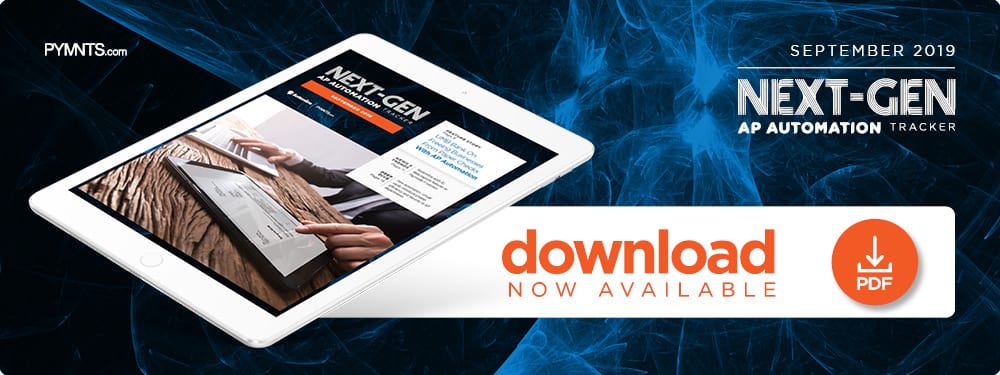UMB Bank On Freeing Businesses From Paper Checks With AP Automation

Automating accounts payable (AP) means the paper check will soon no longer be in the proverbial (and literal) mail. In the inaugural Next-Gen AP Automation Tracker, Uma Wilson, executive vice president and director of product management at UMB Bank, explains how the bank works to break the paper check’s spell, and educate businesses on AP automation’s advantages.
Automation can address many of the common pain points that dog accounts payable (AP) professionals, but they need to be educated about these solutions before they can improve their workflows. Such lessons are essential to fueling automation adoption. There are plenty of solutions available that can digitize invoices, automate data input for processing and enable quick electronic payments, but many AP departments still use paper-based offerings like checks, which are used by 80.8 percent of firms, according to recent PYMNTS research.
This number does not translate into high satisfaction, however. The same study found that 63.5 percent of AP professionals were satisfied with paper checks, compared to the average satisfaction rate of 69.5 percent, Same Day ACH at 83 percent, ACH at 76.6 percent and digital wallets at 73.9 percent.
Why are paper checks still popular, despite low satisfaction rates? Uma Wilson, executive vice president and director of product management at UMB Bank, believes part of the problem is that businesses need to be educated on more efficient solutions. Understanding business clients’ specific needs will better serve them on their financial journeys, providing unique insights into the benefits that automated AP solutions can offer, she said. Wilson recently spoke with PYMNTS about how UMB Bank educates businesses on AP automation’s potential benefits.
“The approach we are taking is to have a discussion,” Wilson said. “Please help me understand the different controls and oversights you have at your company because we want to understand that first.”
Opening Businesses To Automation Opportunities
UMB Bank is a Missouri-based financial institution (FI) that holds over $24 billion in assets. It began offering Bottomline Technologies’ AP solution, Paymode-X, to its business clients in February, enabling users to issue payments via ACH, virtual cards and checks, as well as make secure payments across a network of 400,000 companies within the Paymode-X consortium.
Wilson explained that UMB Bank acts as a consultant, educating business clients on how the technology makes AP processes more efficient based on their specific needs.
“Sometimes, automation for the sake of automation might not drive success,” she said. “That is why we need to have a consultative approach, [and] sit down with the customers to understand what they’re trying to achieve.”
Wilson noted that some firms have delayed automation because they worry it will disrupt existing supplier agreements, which may not have been changed since they were established.
“When we sit down with our customers, [they] provide a perspective like … ‘I have an extended negotiated payment agreement with my suppliers, and they’re already giving me their best rates,’” she said.
What many businesses do not realize is that automated solutions can be easily implemented, and beneficial to both parties. Some suppliers may even already accept electronic payments.
“The conversation to be had is, ‘Your supplier is accepting other means of more viable and more automated payment options from other providers,’” Wilson said. “That’s the talk we’re having with our AP clients.”
Data-Focused Automation Adoption
These conversations could help firms understand which suppliers are already accepting electronic payments, and pinpoint automation opportunities. Wilson explained that corporate clients can conduct annual reviews of their AP processes to determine which customers are still using paper, and whether they might have overlooked opportunities to streamline operations.
Data on how automation can benefit firms can be an effective selling point, Wilson noted, adding that UMB Bank educates businesses about its database of 400,000 companies that can be paid electronically. It also helps them determine whether there are any opportunities to introduce automated payments to suppliers.
Companies that review this database can examine what types of system integrations are available to them, providing greater value propositions to their clients. This data-driven approach helps UMB Bank present the benefits of automation, and demonstrates how easy it is to transition away from older practices, like manually inputting invoice data.
“I want to start talking about data first, then payments come as a byproduct,” Wilson said.
Paper Checks’ ‘Perceived Control’ Advantage
Wilson noted that not all businesses are ready to take the automation plunge because paper checks can offer AP professionals “perceived control” that is difficult to relinquish. Recipients can detach payment stubs from checks, and compare information with the data in their accounts payable and receivable systems.
“They have [a] perceived control attitude toward it … that is sometimes hard to forgo because things are changing, and things are evolving,” Wilson said.
This perceived control can become a roadblock for some businesses. This is where banks come in.
“[The bank] should be an advocate for customers, [and] have those kinds of discussions beyond the standard relationship review we do,” she said.
Banks should also avoid requiring automation, since many businesses might balk at the idea of implementing unfamiliar solutions. FIs should instead present automation as an innovative option.
“No one wants to provide that kind of an ultimatum,” she said. “Rather, what we have is more participation-oriented automation. That’s how we want to structure the discussion with our customers, so they can keep their heads up high with their suppliers.”
Automation is a powerful tool, but AP professionals must first understand the opportunities in front of them. Banks can act as educators in this effort, and use data-driven insights to encourage businesses to achieve their goals with automated solutions. Firms must be prepared to relinquish the perceived control that comes with paper checks, however, before AP automation can gain ground.

